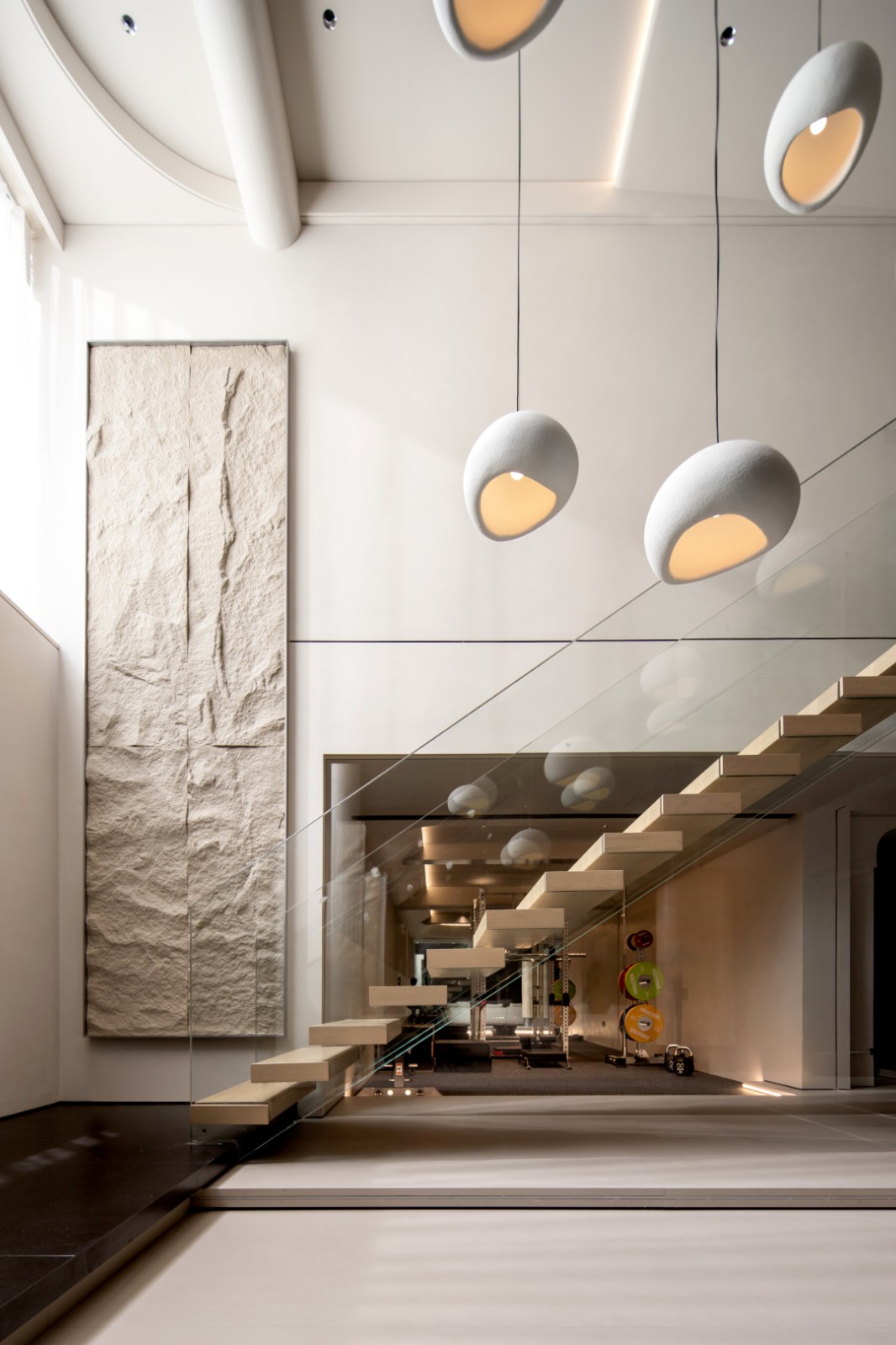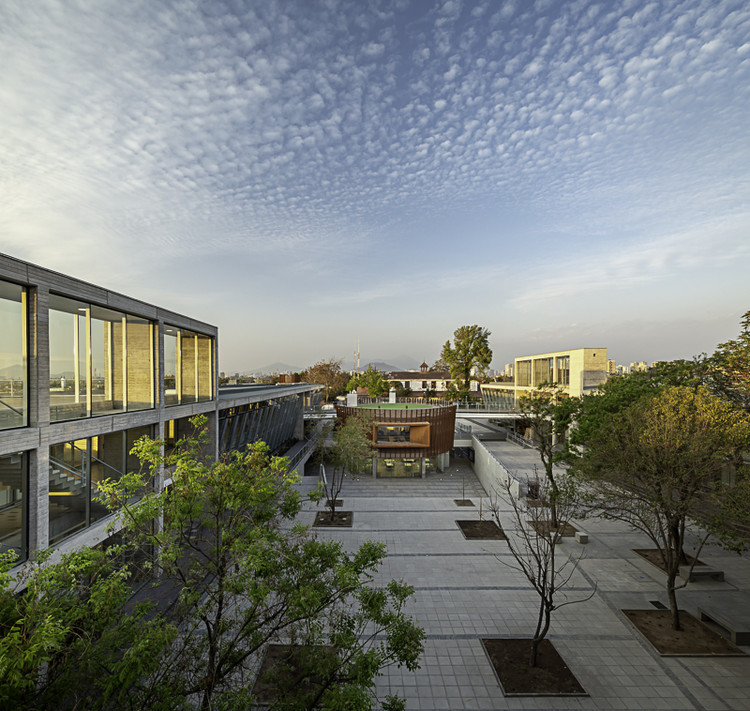House B10 Werner Sobek Group
2015-02-19 00:00
公司名称:上海市发布日期:上海市发布时间:2009-4-18;2009-4-2000;所在地:;所在地;多规格少规格
General planning Werner Sobek Design GmbH Energy concept WSGreenTechnologies GmbH Building construction SchwörerHaus Building control + energy management alphaEOS AG Manufacturers Loading... More Specs Less Specs
架构师提供的文本描述。Active House B10是一个研究项目的一部分,该项目旨在研究创新材料、结构设计和技术如何以可持续的方式改进我们建立起来的世界。由于先进的能源概念和可预测的、自学习的建筑控制系统,房子从可持续资源中产生的能量是其自身需求的两倍。
Text description provided by the architects. Active House B10 is part of a research project examining how innovative materials, structural designs and technologies can improve our built-up world in a sustainable manner. Thanks to a sophisticated energy concept and a predictive, self-learning building control system the house generates twice as much energy from sustainable resources as it actually requires for its own needs.
© Zooey Braun
佐伊·布劳恩(Zooey Braun)
.jpg)

剩余的能源用于为两辆电动汽车供电,并利用智能电网技术,由建筑师勒·柯布西耶(Weissenhof Museum,自2006年起就建成)建造的邻近房屋。将移动基础设施和永久性基础设施结合起来,是一种非常有希望的方法,可以实现一体化和分散供电,以满足电力移动和建造环境的需要。
The surplus energy is used to power two electric cars and – utilizing smart grid technology – the neighbouring house built by the architect Le Corbusier (home to the Weissenhof Museum since 2006). Combining mobile and permanent infrastructures is an extremely promising approach towards achieving an integrated and decentralized power supply to serve the needs of both electro-mobility and the built-up environment.
© Zooey Braun
佐伊·布劳恩(Zooey Braun)
.jpg)

在整个项目的整个过程中,能源的消耗和产生以及与建筑研究有关的大量数据将在斯图加特大学轻型结构和概念设计研究所(ILEK)持续不断地进行测量和科学评估。
Throughout the entire life of the project the consumption and generation of energy as well as a large spectrum of data relevant to building research will be measured on a continual basis and scientifically evaluated at the Institute for Lightweight Structures and Conceptual Design (ILEK) of the University of Stuttgart.
© Zooey Braun
佐伊·布劳恩(Zooey Braun)


B10是名为“Shop Window LivingLab Bwe Mobile”的项目网络的一部分,其中大约40个项目正在斯图加特和卡尔斯鲁厄地区推广。该项目得到柏林联邦运输和数字基础设施部的支持。该州首府斯图加特在三年内提供了属于该市的房产,以使该项目得以实施。
B10 is part of a network of projects known as "Shop window LivingLab BWe mobile", in which some 40 projects are being promoted in the Stuttgart and Karlsruhe regions. The project is supported by the Federal Ministry of Transport and Digital Infrastructure in Berlin. The state capital Stuttgart has made available property belonging to the city for a period of three years to allow the project to be implemented.
该建筑地块位于布吕克曼魏格10号,位于斯图加特著名的魏森霍夫庄园的中心地带。在20世纪20年代,该庄园是一个开创性的信号,为我们的建设环境进行必要的改善。位于Killesberg山的Active House B10正在跟踪房地产的创新特性,并将其转移到新的领域-在那里,房地产和流动性被视为一个整体,并被设计成一个整体。
The building plot is located in Bruckmannweg 10, which is in the heart of Stuttgart's famous Weissenhof Estate. In the 1920s the estate was a ground-breaking signal for essential improvements to our built-up environment. Located on the Killesberg hills Active House B10 is following the innovative character of the estate and transferring it to new realms – where real-estate and mobility are considered and designed as an integral unit.
© Zooey Braun
佐伊·布劳恩(Zooey Braun)


B10将电力移动解决方案和建筑物的能源系统与一个总体的整体控制系统相匹配。因此,它将收费基础设施和建筑服务设备结合在一起,以产生、储存和管理能源,这反过来又使B10成为用户、建筑、车辆和智能电网之间的纽带。
B10 dovetails the energy systems of electro-mobility solutions and buildings to an overarching integral control system. As a consequence, it combines the charging infrastructure and the building services equipment to generate, store and manage energy in a central element – that in turn makes B10 the link between the user, building, vehicle and the smart grid.
© Zooey Braun
佐伊·布劳恩(Zooey Braun)


该建筑除了节能外,还提供了重要的设计创新。B10是计划和工业预制在几个月内。然后在一天内在现场组装,建筑的各种建设性创新包括,例如,使用17毫米厚的真空玻璃,其形式是一层高的玻璃前部。其他重要的创新包括安装带有中央电缆线束的预制技术架、折叠立面元件(作为庭院的双重功能)、完全可回收的木材和纺织墙的建造等等。
As well as its energy efficiency the building offers important design innovations. B10 was planned and industrially prefabricated within a few months. It was then assembled on-site in just a day. The diverse constructive innovations of the building include, for example, the use of just 17 mm thick vacuum glazing in the form of a storey-high glazed front. Other important innovations include the installation of a prefabricated technology rack with a central cable harness, fold-down facade elements (that fulfil a dual function as a patio), a fully recyclable timber-and-textile wall construction et cetera.
Plan Residential Use
规划住宅用途


就像WernerSobek设计的所有研究建筑一样,B10需要最少的资源,而且完全可以回收。因此,它满足了“三零”标准所要求的所有要求:建筑产生的能量比它自己需要的(零能源)更多,它不产生任何排放物(零排放),它可以回到材料循环中,而不留下任何剩余废物(零废物)。
As is the case with all research buildings designed by Werner Sobek, B10 requires a minimum of resources and is completely recyclable. As a consequence, it fulfils all of the requirements demanded by the Triple Zero standard: the building generates more energy than it needs itself (zero energy), it does not produce any emissions whatsoever (zero emissions) and it can be returned to the materials cycle without leaving behind any residual waste (zero waste).
© Zooey Braun
佐伊·布劳恩(Zooey Braun)


.jpg)

.jpg)



















.jpg)

.jpg)









.jpg)

.jpg)















Architects Werner Sobek Group
Location Stuttgart, Germany
Category Houses
Project Year 2014
Photographs Zooey Braun
Manufacturers Loading...

























